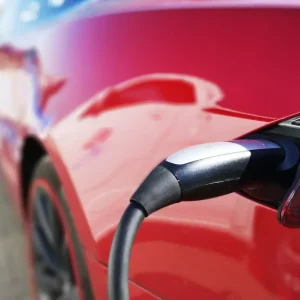No car combines eco credentials with spectacular use of technology quite like the Tesla Model S.
Not only is it green, thanks to its electric powertrian, and able to offer spectacular performance, but in turning an executive saloon into little more than an app this unique car uses technology in a way that is ahead of every other carmaker.
The Model S can be updated in a whole series of ways via the medium of wi-fi, rather than having to head to the nearest dealer every time there is a software update.
And this industry-leading form of communicating with cars incorporates updates that can change the car’s characteristics, from the addition to a low-speed creep function, to upgrading the entry Model S 60 model to a 75kWh battery if the driver decides they need more range. Just like a phone app, the driver can leave their house in the morning and find the car alerting them to and detailing an upgrade.
The new Autopilot system can be retrospectively purchased and sent to the car, should it not be specified from new, and the system itself is another reason why Tesla is such a worthy winner of the BusinessCar Techies Green award. While still officially in the test phase, Autopilot will take the Model S on long motorway runs without needing driver input, even changing lanes under instruction as well as controlling the car’s in-lane position and speed (pictured).
It’s right up there at the forefront of autonomous driving at this stage. But the technology fitted to the Model S should also be viewed in tandem with the fact that the car also has the kind of battery range that others can simple dream of. The 60’s 248 miles is the weakest in the Tesla line-up, yet still dozens of miles better than anything other manufacturers have launched in terms of electric-only vehicles.
What Tesla is doing from a technology perspective is pioneering in a number of ways, and something that the rest of the motor industry needs to work on if it is to catch up. And that’s without mentioning the huge, dominant 17-inch tablet-style screen that controls every function in the car, and the fact that even the Model S 60, the entry vehicle in the range, offers performance that takes the car from rest to 60mph in 5.5 seconds.
The Model S would be a technologically pioneering vehicle were it powered by an internal combustion engine, but the fact that it also leads the pure electric vehicle market in terms of range and performance means it is a car well deserving of the Green BusinessCar Techie award.
Highly commended – Toyota Mirai

The world’s first dedicated mass-produced fuel-cell car is helping to blaze a trail that should lead the automotive industry to a hydrogen future that will emerge within the next decade.
A true pioneer, the Mirai has a range of 300 miles and can be refuelled in the same time as it takes to fill a petrol or diesel model, yet emits only water vapour.
Although the main drawbacks surrounding infrastructure and vehicle purchase cost are still to be overcome, hydrogen power has the potential to surpass the environmental credentials of electric vehicles but without any of the plug-in drawbacks surrounding range anxiety.
The fuel itself is, according to Toyota, the most abundant element in the universe, and completely renewable, which will go a long way to solving the propulsion issues in the future.
And the £66,000 Mirai itself is well-equipped and absent of any shortcomings or compromises, and is no more remarkable to drive than a regular car. Being as unremarkable to drive as it is, while being a remarkable feat of engineering and potentially having a remarkable future impact are the reasons behind us giving it a Highly Commended accolade.





